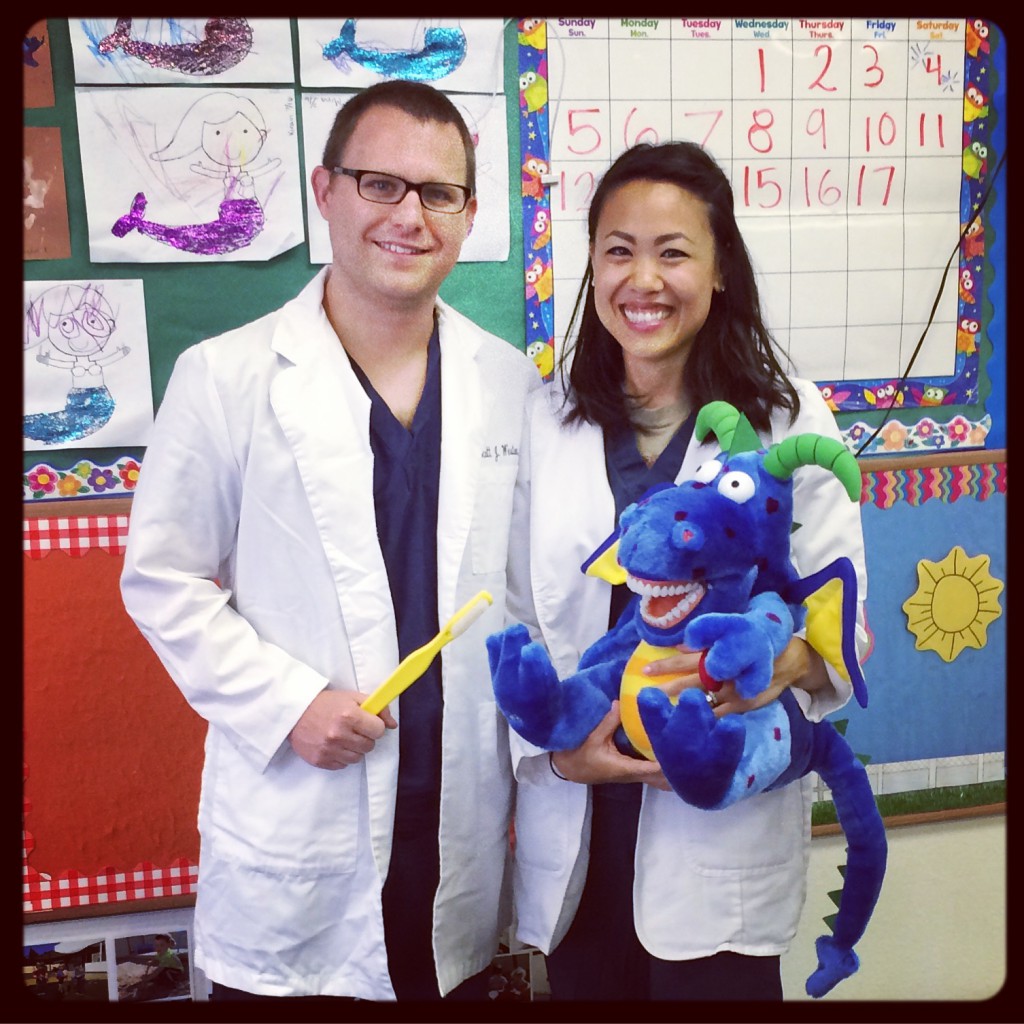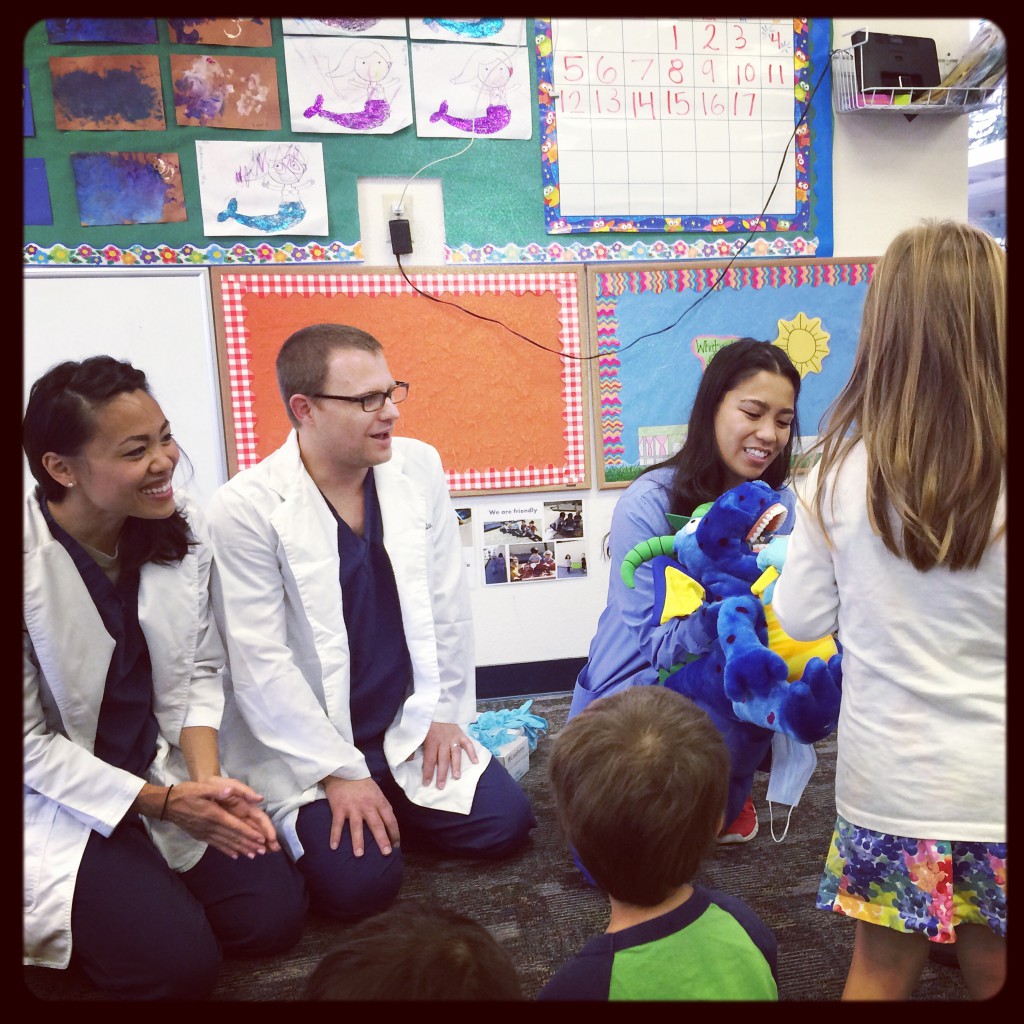Drs. Tran and Weston gave a talk to a group of 2-5 year olds about what a dentist does, why teeth are important, how to brush and floss, and how eating and drinking healthy foods will help keep teeth strong. Assistant Marichelle then showed the kids proper brushing and flossing technique on our friend, Magi the Dragon. The kids all then put on gloves and masks and helped Magi clean her teeth!
We find that it is incredibly important to instill the importance of dental health in young children because many of today’s youth have no idea how neglecting teeth can negatively impact them in the future. It’s also important for them to hear about what we do as dentists, so that they’re not as frightened about visiting their dentist.
The American Academy of Pediatric Dentistry recommends parents bring their child in when they get their first tooth or before they turn 1 year old, and continue to come in at regular 6 month intervals. At these appointments, parents and children are encouraged to ask as many questions. We spend a great deal of time talking to parents about dietary habits and ways to minimize the risk of early childhood cavities. We also talk about oral habits (thumb-sucking, pacifier-use) and how this may affect the growth and development of a child’s jaw and teeth. Next, we perform a visual exam of the child’s teeth for cavities, developmental anomalies or concerns. This can be tricky, but we manage to find the most effective and comfortable position, oftentimes with the child sitting in a parent’s lap or in a knee-to-knee position. We’ll then brush the child’s teeth with a manual toothbrush and water, and paint on a fluoride varnish. As the child ages, we slowly introduce new instruments that we’ll use at their next visit, such as the mirror, “tooth counter,” “fancy power toothbrush,” air and water spray, and our suction “straw.”
We realize traumatic childhood experiences can cause long-term phobia, so it is high priority that we provide children with a positive experience at the dental office. One of the personal joys with having children in our practice is that we get to see them grow and change over time – and at 6 month intervals, these changes can be quite drastic and exciting!










 Web Design by Sleepless Media
Web Design by Sleepless Media